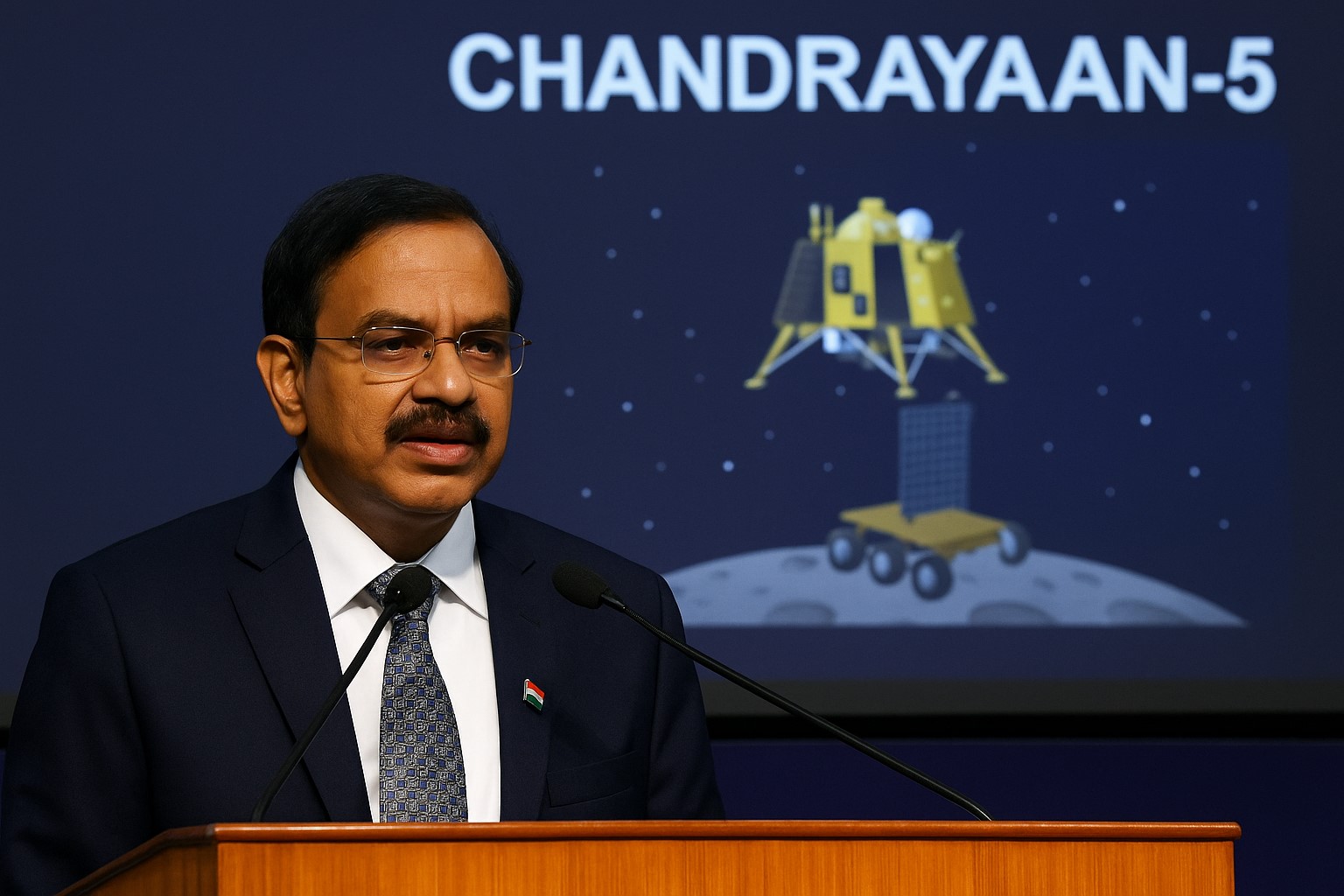
Chandrayaan-5 Mission: India and Japan Set to Begin Design Phase

 :
| Updated On: 15-May-2025 @ 12:54 pm
:
| Updated On: 15-May-2025 @ 12:54 pmSHARE
The Chandrayaan-5 mission, a collaborative effort between India’s ISRO and Japan’s JAXA, aims to conduct an in-depth exploration of the Moon’s surface, primarily focusing on the presence of water and ice. This mission, also known as LUPEX (Lunar Polar Exploration), will study both surface and subsurface water on the Moon. It plans to launch on a Japanese H3 rocket around 2027-28.
Currently, the mission is entering the preliminary design phase for both the lander, developed by ISRO, and the rover, built by JAXA. Instrument selection is complete, and engineering model testing is nearly finished. The rover will explore water-rich areas on the lunar surface, drill into the soil or regolith to collect samples, and analyze water content and quality using seven scientific instruments onboard. Some of these instruments are contributed by the European Space Agency (ESA) and NASA, including a mass spectrometer from ESA and neutron spectrometers from NASA, both still in design. These instruments are crucial for in-situ experiments to measure the energy and mass of samples, helping to understand the composition of hydrogen and other elements.
Asoh Dai, the LUPEX Project Manager at JAXA, explained that among the seven instruments, one large instrument with four sensors is being jointly developed by ISRO (one sensor) and JAXA (three sensors). The rover is designed to traverse specific distances on the Moon’s surface and can climb slopes with an inclination of up to 25 degrees. Battery charging for the rover is complex and planned to occur once before and once after sample collection.
The Chandrayaan-5 mission received Cabinet approval in March of the current year, following India’s successful soft landing on the Moon’s south pole with Chandrayaan-3. Unlike Chandrayaan-4, which is a sample return mission intending to bring lunar soil samples back to Earth for detailed study by ISRO, Chandrayaan-5 will focus on surface exploration and in-situ analysis. The mission duration is proposed to be around 3.5 months (approximately 100 days), with hopes to extend it by a year if all goes well.
The Chandrayaan-5 lander and rover together will weigh about 6.5 tonnes, with the rover alone weighing 350 kilograms. At a recent Global Space Exploration conference held in New Delhi, ISRO’s chairman V. Narayanan reaffirmed the mission timeline and objectives.
The mission’s success depends on the seamless collaboration between ISRO and JAXA. Currently, a JAXA team is visiting ISRO headquarters in Bengaluru to discuss further mission planning and coordination.
Overall, Chandrayaan-5 represents a significant step forward in lunar exploration, focusing on detailed water and ice studies, which are crucial for future sustainable lunar habitation and scientific understanding of the Moon’s evolution. The mission integrates advanced scientific instrumentation, international cooperation, and innovative engineering to unlock new knowledge about the Moon’s polar regions.